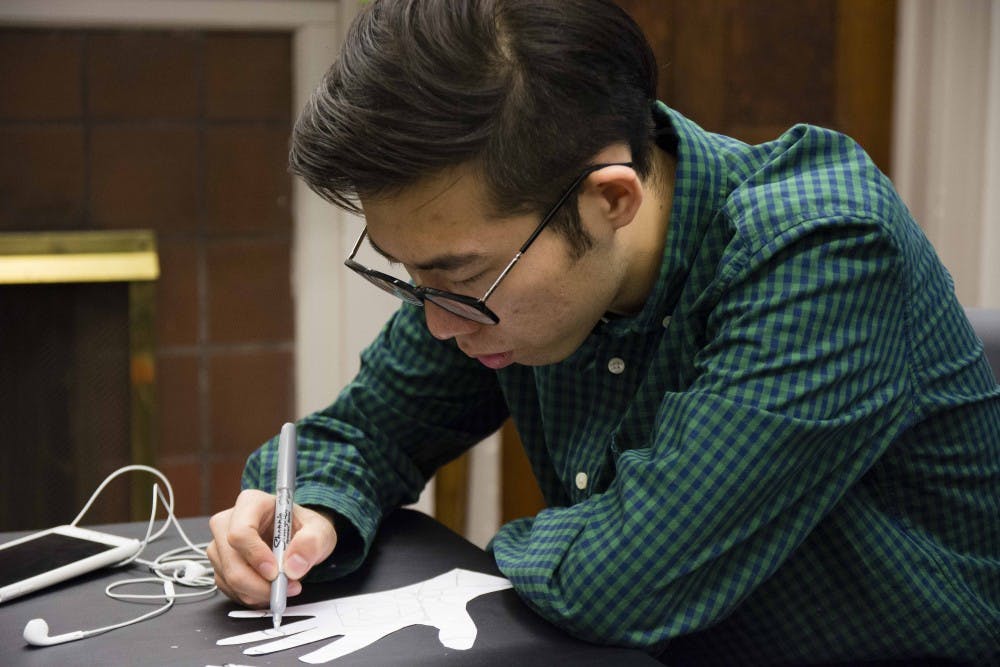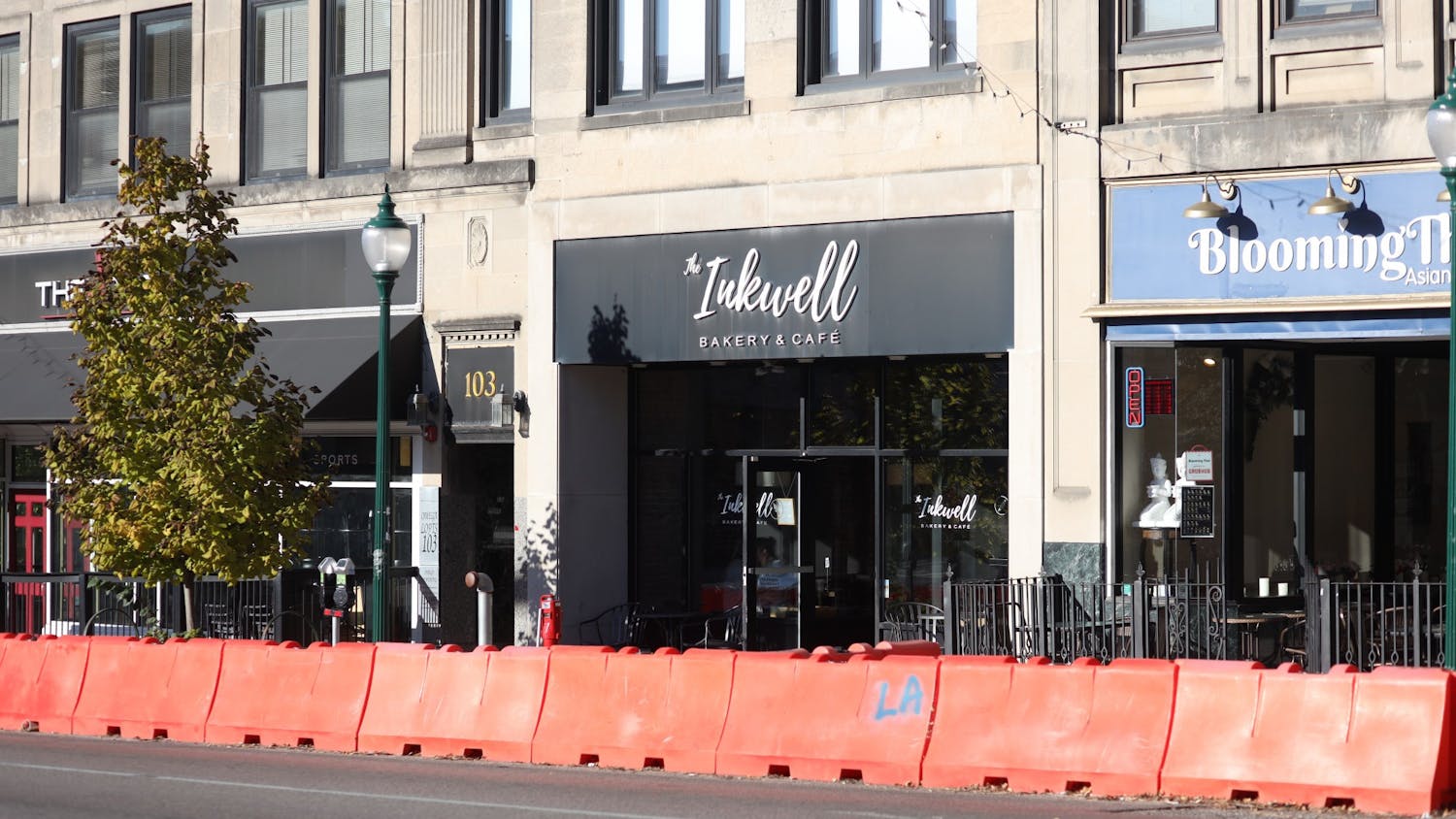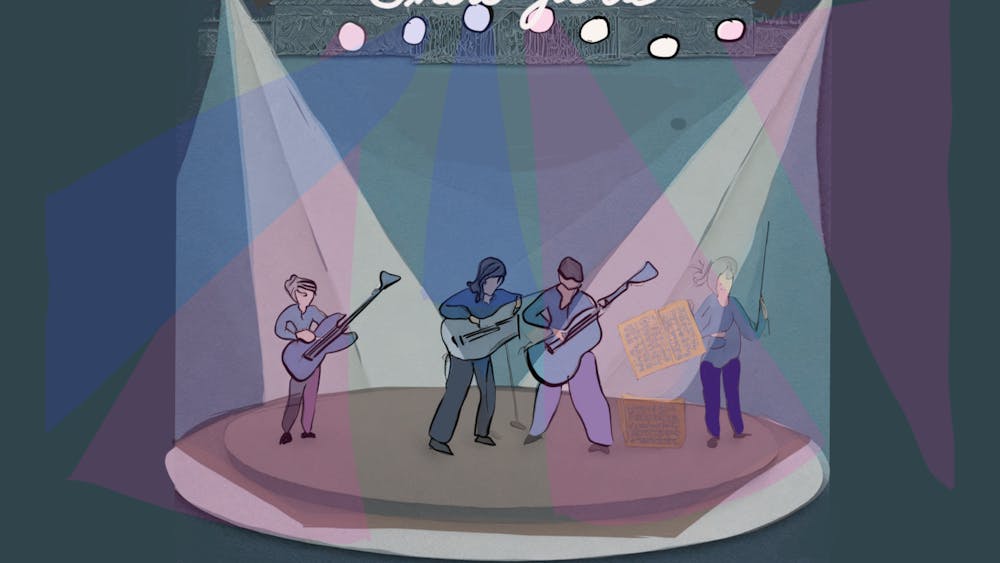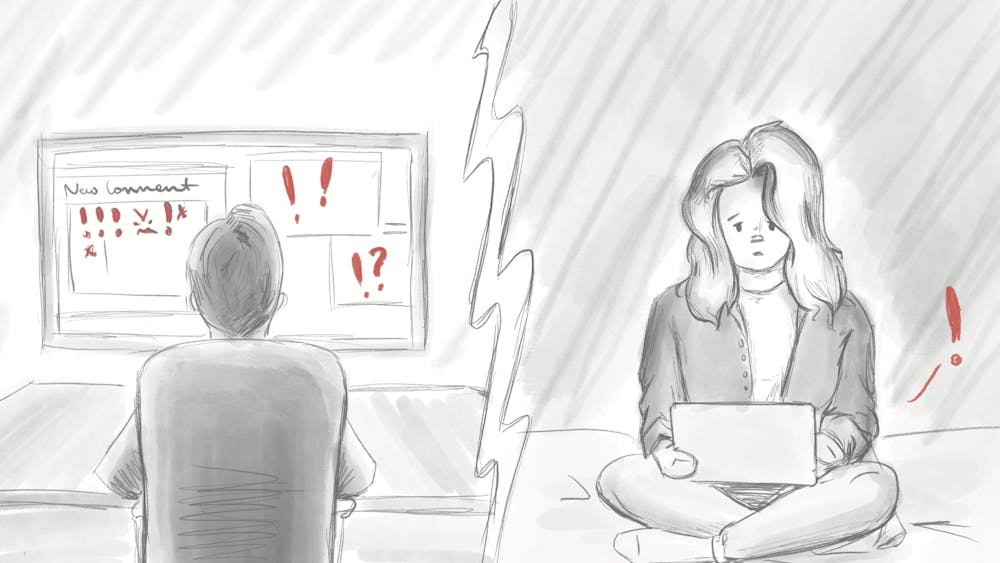At 12 years old, Risana Malik sat in her home in Bangladesh and squeezed blobs of green-brown henna paste onto her hands.
As she started experimenting with henna, Malik said she often became frustrated when her designs didn’t work as planned.
“There were a lot of tears,” she said.
Now, 12 years later, Malik taught her first henna workshop as the Asian Culture Center henna workshop facilitator Wednesday.
“I think it can be really cool to get people involved in henna design,” she said. “A lot of people are drawn to it because it’s a kind of body art, but they don’t know where to start or may not know where it comes from culturally.”
These cultural roots stem from countries in South Asia and the Middle East, including India, Bangladesh, Pakistan, Iran, Egypt and Morocco, among others.
Malik said henna has a distinct cultural significance in each of these countries.
“It’s particularly done for festivals and weddings and cultural events, which kind of gives it a cultural significance,” she said. “It adds a bit of glamour or beauty, and it really is an art with a lot of respect culturally.”
ACC graduate assistant Dillon Smith said he wanted to learn these cultural roots as an attendee of the workshop.
“I’ve seen some henna,” he said. “The first wedding I ever went to was a Hindu wedding that involved henna, but I never really knew how it tied in with the culture. I was really looking to hear about its cultural connection and how it varies in different cultures.”
Despite this cultural significance Malik said it was henna’s role as a cosmetic art that drew her to it.
“To me it’s a distinctive form of cosmetic art or body art,” she said. “I was drawn to it because it was really, really pretty and just relaxing to do, and it was a part of fashion and cosmetic beauty for weddings and festivals. The cultural significance became incidental, not really what drew me to it initially.”
As Smith practiced his designs he said he was trying to capture the intricacy that he associated with henna.
“The henna I’ve seen has been pretty intricate,” he said. “I know a lot of henna has a lot of little details and symmetry, so I was kind of looking to emulate that.”
While intricacy is a significant aspect of traditional henna, Malik told attendees that there is more to developing henna designs than just intricacy.
“Intricacy is one aspect that draws attention but equally important is using the white space,” she said. “So how the design and white space complement each other to form a comprehensive design is very important visually.”
These designs and styles also vary from country to country, Malik said.
“Some countries use thinner lines and more intricate patterns,” she said. “Others may use thicker lines and more white space. Some even use it as a hair dye or accessory.”
Malik said it is important to practice in order to find where your own style falls along the spectrum of others.
“You just have to practice the motifs that make up the larger designs until you get a better handle on it,” Malik said. “With practice then you can develop your own distinctive style that may play on the styles of other countries.”






